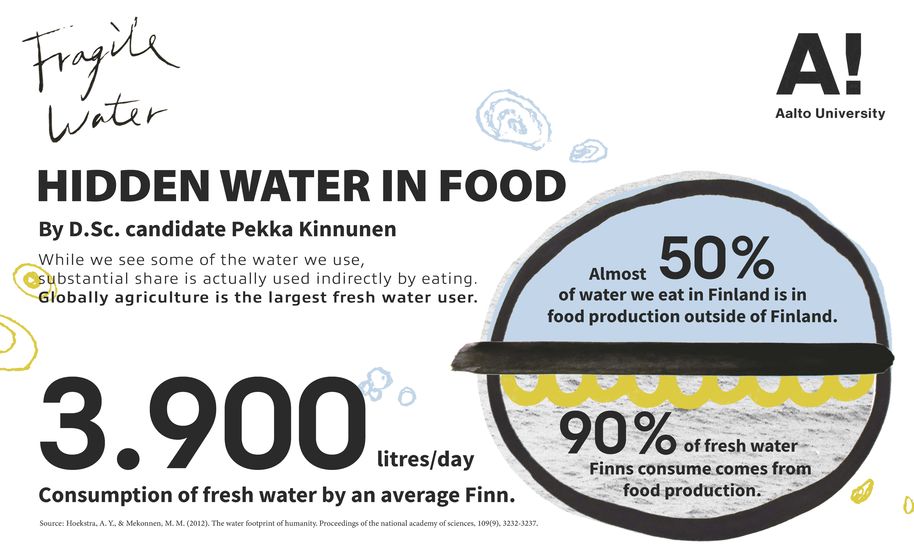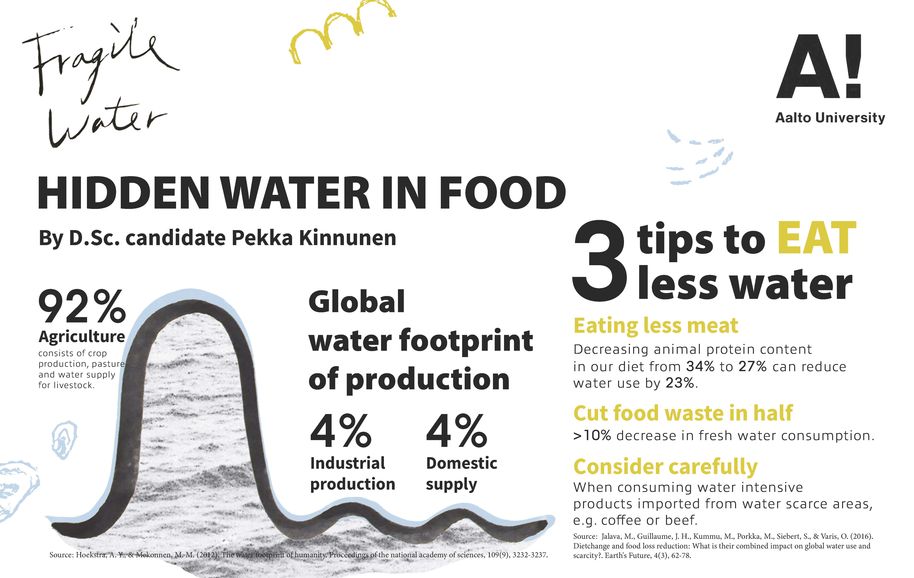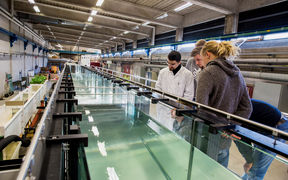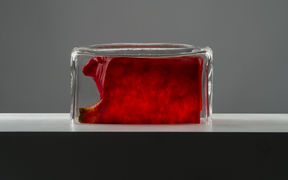How can we eat less water?

Aalto University's design students and water researchers joined forces to visualise sustainable water solutions in the Fragile Water exhibition, showcased at Helsinki Airport in 2019.
“Water is essential for life. While we see some of the water we use—in drinking, bathing, and washing—a substantial share is actually in the production of goods. In fact, about 90% of the water we consume is concealed in what we eat.
Globally, agriculture is one the biggest users of fresh water. Crops use rainwater and irrigation to grow. We call the water embodied in food virtual water, and this concept helps us see hidden water flows.
Everyone can have an influence on how much water we eat. At the end of the day, it’s a matter of what we choose to eat and what we end up leaving on our plates.
Animal-based products are one of the most water intensive foods. Evidence has shown that eating less meat and other animal-based products creates virtual water savings.
Another way to decrease water use is reducing, or avoiding, food waste. Less waste means that we use produced food more efficiently, so more people can be fed with the same resources.
In addition to the actual water use, we need to look at where food is produced. Our food consumption choices affect water use locally, and also abroad through the global food trade. In Finland, where I live, almost half of the water we eat is used in food production outside our borders.
Conditions, like temperature and rainfall in production areas, together with crop type, production intensity and methods affect how much water is needed. For example, the global average water footprint of one kilogram of beef is roughly 15500L and for nuts it’s around 9000L. It’s a lot if you compare that one kilogram of potatoes needs only 300L. However, these values change depending on the production location.
The impacts of production also largely depend on local conditions. If water intensive food production occurs where water is scarce, consuming products from these areas may exacerbate the scarcity. On the other hand, food from water rich areas might not have a substantial impact from a water resource use perspective, even if the food requires lots of water.
The bottom line: food and water are linked by multiple complex issues. So, if we want to enjoy sustainably produced food, we need to look at our eating habits as well as where and how food is produced.”
D.Sc candidate Pekka Kinnunen

Water and Environmental Engineering
Water and Environmental Engineering research at Aalto University aims to find solutions to decrease resource scarcity and to support sustainability. Our research is divided into two strategic areas: global water issues and sustainable circular economy, which are further divided into four research entities.

Fragile Water exhibition highlights vulnerability of water resources
Water resources are limited and vulnerable in many places in the world. Design students and water researchers joined forces to visualise sustainable water solutions in the Fragile Water exhibition.

Read more news

Get to know us: Associate Professor Maria Sammalkorpi
Sammalkorpi received her doctorate from Helsinki University of Technology 2004. After her defence, she has worked as a researcher at the Universities of Princeton, Yale and Aalto.
Aalto computer scientists in ICML 2024
Computer scientists in ICML 2024
Getting bacteria into line
Physicists use magnetic fields to manipulate bacterial behaviour